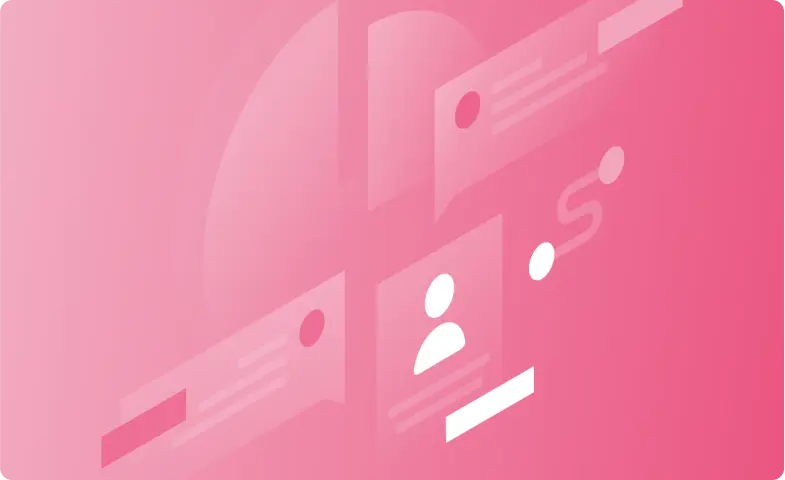The market for face recognition
The face recognition market had a value of $3.8 billion in 2020. But experts believe that by 2025, the value will rise steeply to as high as $8.5 billion. Of the overall market value for facial recognition, the lion’s share belongs to North America and is over 37%. Not just this, but since the launch of FaceID by Apple, the trust that people have in facial recognition technologies has gone up. Nearly 73% of all US adults trust facial recognition.
How accurate is face recognition?
Are face recognition systems accurate enough? I mean, are there any numbers or expert opinions to support this? Yes, of course. According to the Centre for Strategic and International Studies (CSIS), stated as recently as April 2020, face recognition systems today have reached an astounding level of accuracy, that’s 99.97%. However, in daily conditions, this dips a bit and though AI has eclipsed itself when it comes to precision, the accuracy will vary from case to case.
In the real world, face recognition powered by the AI models of today has achieved an accuracy of 95% and with HyperVerge AI, the accuracy is even higher at 97%. Add a panel of manual reviews when the system throws an exception, detects fraud, or is unable to identify, and this could be a foolproof security and privacy solution that businesses would be happy to support and spend on.
The process of face recognition
Let’s now look at the process of facial recognition. The process consists of three steps: (1) Image Capture, (2) Image Analysis, and then (3) Image Comparison. In the first step, the facial image is extracted from video or pictures. In the second step, this analog bit (the face) is then converted into digital information consisting of data and vectors. This will not only set apart each distinguishing feature of the face but also accounts for the distances between them. The last step is the process of comparison, that of comparing the face from the image with the one stored in the database (to authenticate a user, for instance) or with “N” other facial samples stored (to identify a suspect).
How is Face recognition accuracy measured ?
Face recognition accuracy is measured by testing the algorithm on different dataset.
The datasets we use for testing should ideally be similar to the potential data the algorithm will finally be working on, as that might give the closest accuracy.
The accuracy is measured using the 4 responses of the algorithm-
False positives- when to distinct people are identified as one
False negatives- when a single person is identified as two separate individuals
True positives- correctly identifies same individual in two different images
True negatives- correctly identifies two different individuals
Factors affecting face recognition accuracy
Even complex facial recognition algorithms might get affected by certain factors that affect the results of such systems. Some of these factors include –
Aging – when skin texture changes and wrinkles form, it might be difficult for an algorithm to identify the person. This might also happen when a person undergoes plastic surgery.
Presence of facial hair or spectacles, direction of face or even a change in facial expressions might alter the results.
Low resolution images or noise in image processing might also result in errors.
Other factors that affect facial recognition accuracy include illumination of face, pose variation of the person , or occlusion – when certain objects like a mask or a scarf might be hindering the process of facial recognition.
How has face recognition accuracy improved
The development of newer FRT or Facial Recognition Technology aims at eliminating errors due to the intrinsic and extrinsic factors discussed above. Deep learning and neural network models are replacing outdated models to give better results.
There are certain enhanced technologies that can detect and recognize faces from a group of people with brilliant accuracy levels.
Another factor that can improve the accuracy of your facial recognition system is a varied training dataset.
Combining all previously used factors such as iris images and facial features with the latest AI technology, there have been significant improvements in the accuracy of the latest facial recognition systems.
Liveness detection systems improve accuracy of face recognition
Again when the likeness of a face is being presented to the camera, it is up to the recognition system to decide whether it is a genuine face or not. Because it could be a 3D cut out, a mask, or just a high resolution image as well. To ensure that it is neither of these, a liveness detection system can be used. A liveness detection system can be active or passive. An active liveness detection system is one where the user is asked to perform some movements with the face such as open and close mouth or blink eyes. One drawback to the active liveness detection system is that it alerts the user that a check is happening.
On the other hand, a passive liveness detection system, such as HyperVerge, does not give any alerts to the user that a check is happening. But a verification does happen where the AI analyzes the facial contour and features and their relative positioning and so on to authenticate the user. It even checks for borders, texture, and masks or cutouts, to rule out fraud. The user is not alarmed in any way or asked to perform any motion tasks and because there are no prompts of any kind, it is more difficult to hack past such a system.
Businesses and governments trust face recognition
Yes, that’s right. Businesses are spending heavily on facial recognition. An example is Crypto where facial recognition helps identify the person and obtain the proof of address etc. It can also help organizations like Facebook and Twitter help the authorities identify suspects in gruesome or unpleasant videos or images.
In general corporate settings, facial recognition can also be used to mark attendance and to identify suspects involved in misdemeanor. In retail, it can help stores identify loyal shoppers to:
- Drive personalized recommendations
- Award rewards points
- Make targeted promotions
Governments across the world too have been investing significantly in facial recognition to identify terror suspects or people involved in criminal or illegal activities. The governments investing most in facial recognition are China and the United States, though other governments in the world especially in Europe are also actively using face recognition services to investigate matters of public or national interest.
Why HyperVerge for face recognition?
When a business or a government is looking for a face recognition system, it is imperative to pick one that offers additional features like liveness detection to ensure authenticity of login for every user, and preferably passive liveness detection. It must be able to capture images from fast moving video, poor images and over an inconsistent internet. In addition, the face recognition system must also be
- ISO certified (in the interest of quality)
- SOC 2 compliant (in the interest of security, integrity, and privacy)
- GDPR ready (in the interest of privacy and law)
- Must secure communication with 256-bit encryption for data at rest and in motion.
There’s a lot of face recognition systems out there that aren’t really worth your money. But HyperVerge is not one of them. In fact, it meets all of the above minimum requirements with ease. And to add to that, the continuous benchmarking against competitors continues to improve the accuracy of the face recognition system with every iteration to near perfection. Talk to us to know more about HyperVerge face recognition systems!







